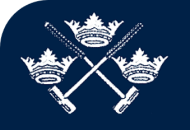
|

|
|
|
|
||
Intermediate CoachingThe intermediate range covers players who are roughly in the region from handicap 4 to 14. The notes below are taken from the Intermediate Coaching Sessions that Robin Brown kindly gave to an assortment of OUACC members during Trinity Term 2002. Session 4This session was mainly devoted to the penult peel, finishing with a discussion on 3 ball 4-b leaves for a bit of variety. The Standard Penult Peel, Non-TripleThe most emphasised point was that the break comes first, and getting the peels done comes second. Always concentrate on getting the correct positioning to maintain the break, even if that is at the expense of the peels. Presuming that the peelee was 'in-play' before the peel, contrive to get it as either the hoop 6 pioneer or the pivot. Before you go through 5, position those two balls together, and hopefully quite close to hoop 6 (together is the more important than close). Hopefully get a rush out of hoop 5 to somewhere useful. When positioning the 1-b pioneer, it is worth bringing it round to the peg side, rather than the usual 3BB position in front of the hoop. This makes the subsequent 2-b pioneer positioning shot a little less critical upon getting a N rush on the escape ball. Also, before going any further it is important to assess how much control you are likely to have when it comes to the peel shot, since this has an effect upon the positioning of the escape ball: good control would be expecting to get the peelee about a foot or less infront of the hoop; poor control would be anything significantly further away. Position the 1-b pioneer, getting a rush on the prospective escape ball. It usually allows for greater accuracy to go to the peelee second. Position the escape ball, and get a good rush on the peelee, to the playing side of hoop 6. The positioning of the escape ball:
If for whatever reason you are unable to position the escape ball on the W side of the hoop as described above, then use the comparable positions on the E side (1yd SE of hoop, and 1-2yds NNE, respectively). Rush the peelee, hopefully quite close to the hoop, on the playing side. Get into hoop running position and position the peelee. If it is under good control, position it close to penult on the playing side. Otherwise concentrate on getting it to a position on the centre-line of the hoop. Run the hoop. Roquet the peelee, rushing it towards the hoop or its centre-line, if the opportunity arises. As discussed previously, for the rover peel, lining up the balls properly requires you to get your head down to the ground and to look along the sides of the balls. How the peel is played again depends upon how much control you have:
Rush the escape ball N of the 1-b pioneer by a useful distance. Position the 2-b pioneer, whilst getting a rush on the 1-b one. If the peelee either is in the jaws, or didn't go very far through, aim to get a NE rush out of 1-b, so that as you position the 3-b pioneer you can approach the peelee.
It can be worth trying to peel rover on the way to 3-b. For that it can be advantageous to bring the 3-b pioneer out to the W or NW side of the hoop, since otherwise it becomes necessary to play a wide split roll. The Standard Penult Peel, During A TripleIf the penult peel is being used as part of a triple peel, then it will be necessary to move the peelee to penult at some point after running hoop 4. There are two opportunities for moving the peelee to penult, one after each hoop:
Three Ball Leaves At 4-B and 3-BIn the event that you hit-in third turn, and get all the way round to 4-b or 3-b, there are two types of leave to consider setting.
© 2025 Oxford University Association Croquet Club |
||
